
Mental-Emotional Health & Acupuncture
Many of us have lives that feel heavy: burdensome. We may be pessimistic, or stuck in a type of trauma, feel jaded or just overwhelmed. The outer world is full of conflict and instability at this time. It’s easy to feel anxious, afraid, angry or depressed about it.
For some of us our reaction to the world and its strife manifests emotionally, for others there can be strange physical symptoms. Some of us are more emotionally expressive by nature; others “somatize,” hold it in and experience it in their bodies.
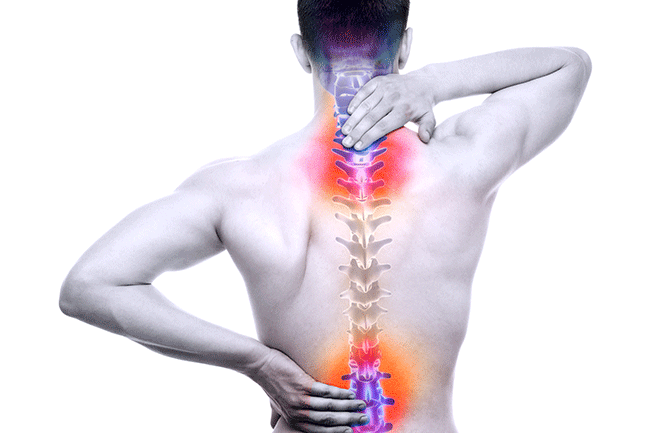
We can become burdened by a state of habituation or obsessive thinking that weighs our spirits down. Habitual thought patterns can feel like a trap: a prison. They can be conscious or unconscious, even psychosomatic.
Physical symptoms are obviously not always linked to something mental-emotional, but in our high pressure world I notice a stress component to most ailments.
As an acupuncturist, no matter what I am treating, I focus on helping “rectify” and lighten the mind and emotions so a person’s spirit can shine free.

In the most classical of all acupuncture textbooks (entitled Ling Shu: the compass of the soul) a person’s spiritual wellness is described as the root of health and healing: the most important element.
There are two main elements to “the spirit” and its treatment. There’s the “Shen” which is “housed” in the Heart, and the “Zhi” in the Kidneys. “Shen” refers to all aspects of our mind and emotional capacity, but it is also our sense of animation, curiosity, “spark.” The “Zhi” is our willpower and ambition: the driving force of life.
The relationship between the Shen and Zhi are fundamental to our sense of mental health and wellbeing. It is also the root of our spiritual vitality. The “Shen” as the animation of life manifests joy and desire to connect. The Zhi is the the drive to live; it gives energy and vitality to the Shen so we can utilize our life creatively.
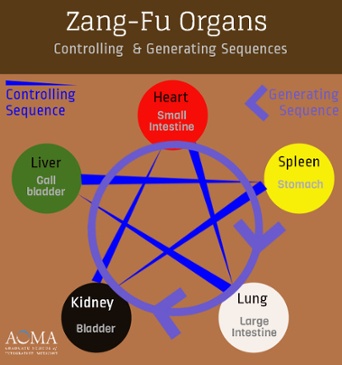
Communication between the Shen and Zhi (Heart and Kidney) is key to our mental health. It is the way the spirit keeps our body vital. It is also something that can be easily disturbed and interrupted by the insults and traumas of life.
Treating the basic vitality of a person is therefore working on the Kidneys and the Heart, especially “harmonizing” communication between the two. This not only helps in the healing process (whatever the ailment), it also makes daily life easier and more pleasant. It’s the feeling of “being connected,” in the flow, “one with ourselves.”
Energetically the Kidneys are the battery pack of the body: the root vitality. The “fire” of the Kidneys (the Yang) empowers and supports the digestive and immune systems as well as all other systems of the body. The Kidneys also hold onto the “essence,” which feeds and empowers all other parts of the body.

When we speak of organs and their functions in Chinese medicine, it is really “systems” we are talking about. The Kidney therefore possesses functions relating the endocrine, immune, skeletal and nervous system. To treat the Kidneys therefore treats all aspects of the expansive system, dividing the body into 12 systems and 5 elements. The Kidney system represents the “constitution.”
When Kidney energy moves into the Heart, the root vitality is circulated throughout the body. But there is something more that happens: the root vitality mixes with the Shen-spirit to empower all of our actions and drives with our spiritual “Ming” or destiny. This creates the desire, but also the unconscious drive to live in spiritual alignment with our own truth, sense of mission and connectivity. It is the merging of the material with the spiritual in our lives. This permeates all our actions, thoughts, even our outer reality. We are drawn to that which is in resonance with our spirit; we also attract what is right for us. This is what it feels like to be in alignment: Heart-Kidney communication.

The term that is often used clinically for working with the Heart-Kidney communication is to “harmonize” the two energies: that of the drives and root vitality with the circulatory system, mind and spirit.
To work with the Kidney energy is to “invigorate.” This means using the vitality of the Kidney energy to make another aspect of the body stronger. It is common to use Kidney energy to “invigorate the blood” or “invigorate the (Immune or digestive) energy (Qi and Yang).”
To “invigorate the blood” is physically used in cardiovascular and menstrual conditions, but it is also a strategy used to break through mental-emotional trauma and static thought patterns. Just as our circulatory system and menstruation can create blood stasis and even sclerosis, the same can happen within the mind and emotions. This affects how we see the world, how we manifest our desires and within our relationships.
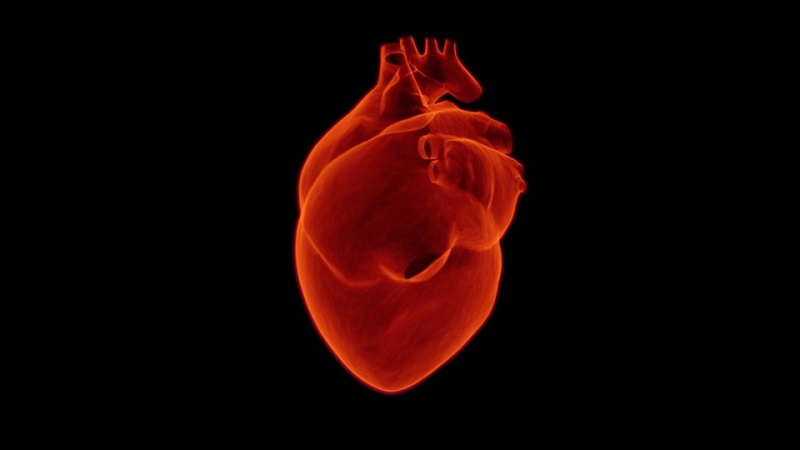
The Heart-Kidney connection is also involved in the life process of interaction The basics of survival, including respiration and digestion are “ruled” by the Lungs and Stomach, whereas the process of “living” where we try to create meaning from experience and relationships is ruled by the Heart and Kidneys.
The Kidney energy holds onto our essence: our true selves, our DNA. It naturally travels into the Heart to meet with the “Shen-spirit” to invigorate the blood. This can be seen as our “will to live” connecting with our “desire to connect and learn.”
The blood is the mediumship where spirit circulates. The Heart and its animation are what feed the curiosity and desire to experience life and create relationship. There is an exchange that occurs between the Heart and Kidneys (the outer world and our inner world). We internalize experiences we create, so they may change us: help us evolve and develop wisdom. This is the process of living life. It allows us to grow and learn. From this we develop choice: an idea about how we want to live which is managed by the Liver and Gallbladder: the channels of manifestation and creativity.
Within this process can be traumatic experience that “taints” us. Trauma and its response is managed by the Pericardium which is type of intermediary between the Heart and Kidneys: “the heart protector.” This often manifests as blood stasis or phlegm that blocks proper communication between the Heart and Kidneys, leading to insomnia, anxiety and many other symptoms of unease.
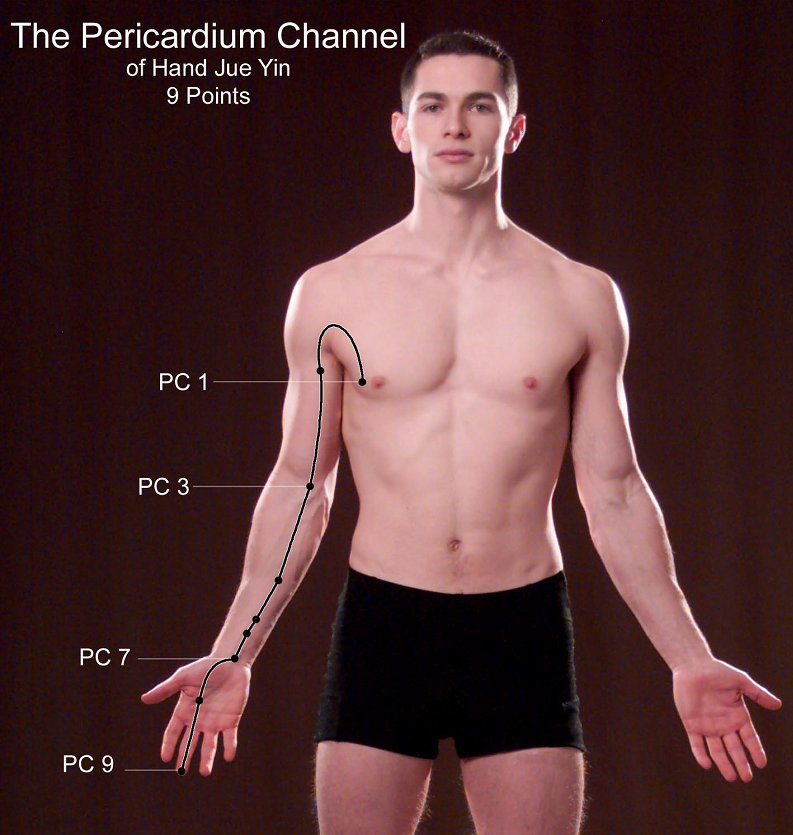
Our traumas and disappointments as well as the abuse we may suffer in life can inhibit our vitality and disturb the way we feel: about ourselves and life. It can block the exchange between the Heart and Kidneys, causing our “hearts to close,” or our Kidneys to go into inversion so they stop fully supporting the vitality of our body systems, including the mind and spirit.
Trauma can even alter our personality: a manifestation of another acupuncture channel called the “Triple Heater” (San Jiao) which like the Pericardium is a somewhat mysterious channel that has function but is without form. The Triple Heater manages water metabolism (endocrinology), but also the distribution of the essence-vitality throughout the body to create our personalities and disposition.

If we feel we’ve been traumatized to the point that we are “broken” or our lives have been ruined or altered, then we often have issues relating to the Triple Heater or Pericardium. This indicates a disturbance in the communication between the Heart and Kidneys.
To restore proper communication between Heart and Kidneys supports the natural expression of the self as well as the ability to let the world in. It is the process of returning a sense of joy, but also interaction and growth to a person. It also invigorates the circulatory and immune function.
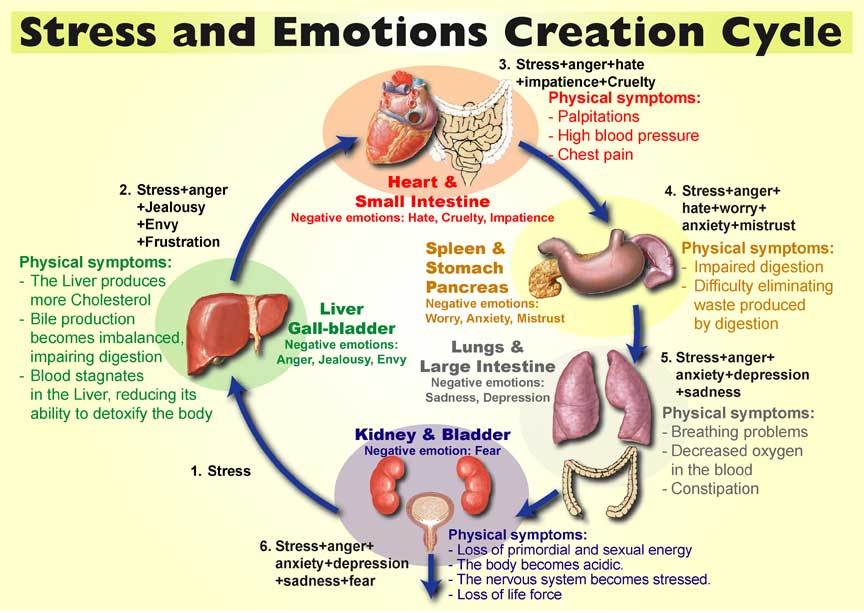
There is a distinction between the “Yin” and “Yang” aspects of the Heart-Kidneys.
The “Yang” is the ability to interact: the will to explore and create relationship. It is the ability to learn, grow and change.
“Yin” is the sense of satisfaction and comfort in who we are and our lives. It is the ability to feel we are and have enough. There will still be the desire to explore and learn, but with a base sense of wholeness: containment and contentment.
A feeling of powerlessness, that we can’t do something is a deficiency of “Yang.” The feeling we don’t have enough or that we aren’t enough is a deficiency of “Yin.” Yang is active, movement, capacity. Yin is material, substantiation. Yang is doing; Yin is being. There can be deficiency of Yin and Yang, also stagnation of Yin or Yang.
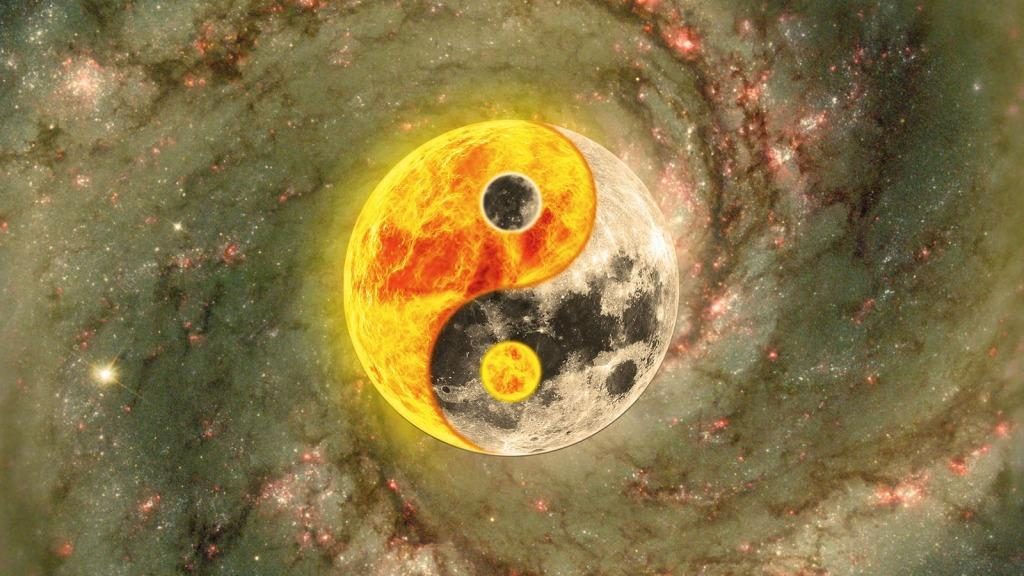
Within acupuncture treatment the depth and seriousness of a trauma determines the type of channel used. There are five depths of the energetic acupuncture channels. The art of acupuncture treatment is using the correct energetic depth to reach the level of disturbance.
Trauma to the blood (Heart, mind, emotions) is often addressed through a set of acupuncture channels called the “Luo” connecting vessels. Trauma to the essence (Kidneys, self) is treated with the “Extraordinary Vessels.”
There are two important acupuncture channels that circulate horizontally, which is rare. The first of which is a “Luo Vessel,” the other is an “Extraordinary Vessel.”
Most acupuncture channels run vertically. The horizontal channels are special.
The first of these vertical channels circulates around the chest. It is called “Da Bao”: the Great Wrap. The other channel circulates around the waist, called “Dai Mai”: the belt vessel. These are both “holding vessels” in the sense that they maintain the integrity of the body (the waist and chest), but they also hold onto unresolved issues including trauma. They are like the dark closets of our mind that hold onto things that haunt us.
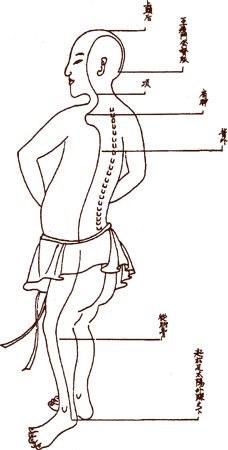
Da Bao and Dai Mai, the two horizontal wrapping vessels, are linked by another channel called “Bao Mai.” This is the way they are able to communicate with one another, but also the route by which something from the chest can find its way into the waist. Philosophically this means a trauma to our “heart” or emotions can be sublimated into our Kidneys, becoming a part of our personalities, a reality in our lives, something we pass onto our offspring or even into our next lives. It is the route by which a trauma that hurts our “heart” can alter our personalities.
There is a concept in classical Chinese medicine that “blood stagnation” can turn into “phlegm stagnation” over time. This is presented in the textbook chapters describing the “Luo Vessels.” Psychologically this means a trauma or issue that is conscious (a blood stagnation) can turn into something unconscious (phlegm stagnation).
The chest is the realm of blood: the emotions, where the “Shen” spirit is “housed” in the Heart. The Kidneys are located in the lower part of the body which is more mysterious, where our drives and basic willpower are rooted. When a trauma is being held in the chest we will often have an awareness of it and understanding about what it is about. When it becomes translocated into the lower part of the body, into Dai Mai, it can start to affect our drives, becoming something unconscious that influences and even haunts us. It can also alter us and our perception of the world. By moving into the other Extraordinary Vessels the unconscious trauma can start to alter our “stance,” posture and physical bodies.
Trauma can be deposited and held in the chest (blood vessels), the belt (lower back and lower abdomen, including the uterus and genitals), as well as the joints and bony cavities of the body. The Brain is another depository.
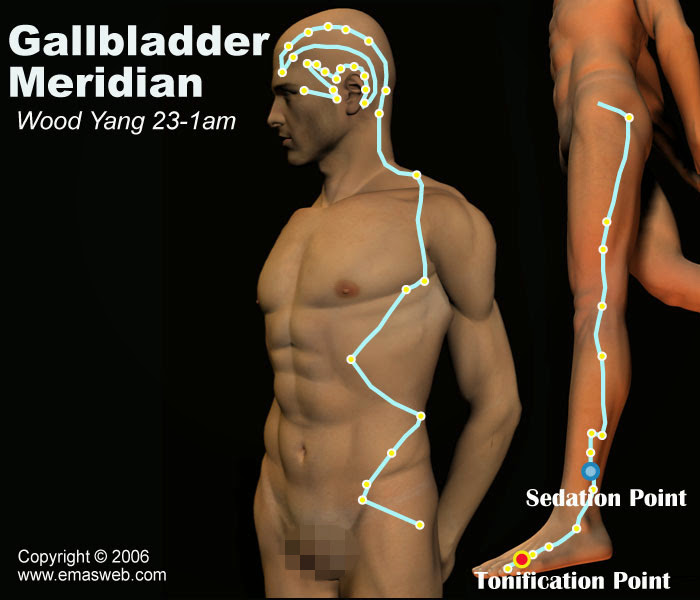
The Gallbladder and Liver have access to most of these holding areas. Spiritually these organs are a bridge between the realm of our daily lives and the next. They also enter into the Brain where experience is stored.
The Brain is called “the sea of marrow.” Marrow is defined as Jing (Essence as stored in the kidneys) as it combines with Shen (experience and desire, stored in the Heart). It is a combination of who were were born to be through our DNA-ancestry and what our spirit wants to explore in this life.
The marrow in the brain can also hold onto difficult experiences and trauma, but it does so in a way that creates a sense of “meaning” or decision about life: a stance or point of view. The brain is classified as a special type of organ called a “Curious” or “Extraordinary” organ, different than the Liver, Heart, or Kidneys. The Curious Organs, like the Extraordinary channels are reservoirs for precious substances (ie the marrow: wisdom) but they are also ditches that hold onto unresolved issues and pathology usually in the form of blood stasis or phlegm.
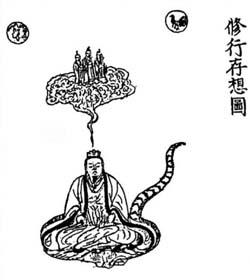
The brain and the channels of the Liver and Gallbladder, as influenced by the Pericardium and Triple Heater, create our sense of differentiation: the way we define the world and ourselves. When we have trauma this can become a fixation and rather self-limiting viewpoint. The old adage says it well: “we see the world not as it is, but how we are.”
Trauma can change us, taking us away from an innocent state into one that is rigid, biased, jaded, cynical. A popular school of Chinese medicine goes so far as to say aging is not so much about the body becoming deficient but from rigidity that sets in: blood and phlegm stasis – psycho-sclerosis. A great doctor who focused on blood stasis in the early 20th century said the process of Brain degeneration begins in the chest: at the Da Bao vessel (the Pericardium) and eventually finds its way into the belt and eventually the brain.
There is an important acupuncture point located on the head, at the outer side of the eye called the “virgin child” (GB-1). It is the first point on the Gallbladder channel. Another point located on the inner aspect of the eyes is called “Jing Ming”: Bright Eyes (BL-1), the first point on the Bladder channel. Classically it was called “Ming Men”: the gate of life, which is also a point located between the Kidneys on the lower back.

GB-1 is a point that clears the eyes, but does so to help a person regain an “innocent” viewpoint. It clears the brain of its rigidity. BL-1 is said to “nourish the essence,” strengthening who we are essentially. ST-1 underneath the eyes is called “the container for the tears,” invigorating the letting go process. The region of the eyes is connected energetically with the brain.
The ancient acupuncture textbook “Ling Shu” describes mental illness as “beginning in the eyes.” Therefore treating points around the eyes (and nourishment to the eyes themselves) is an important first step in many conditions, especially those that involve the mind, emotions and spirit.
There are two “Extraordinary Vessels” that meet at the eyes (at BL-1), both of which go into the brain. The Yang Qiao Mai influences our relationship with the world, while Yin Qiao Mai influences our relationship with ourselves. They are collectively called the “stance vessels,” representing the way in which we “stand up” to the world, and to ourselves. The Qiao Vessels maintain our “stance” in life: what we have decided about the world, life and ourselves.
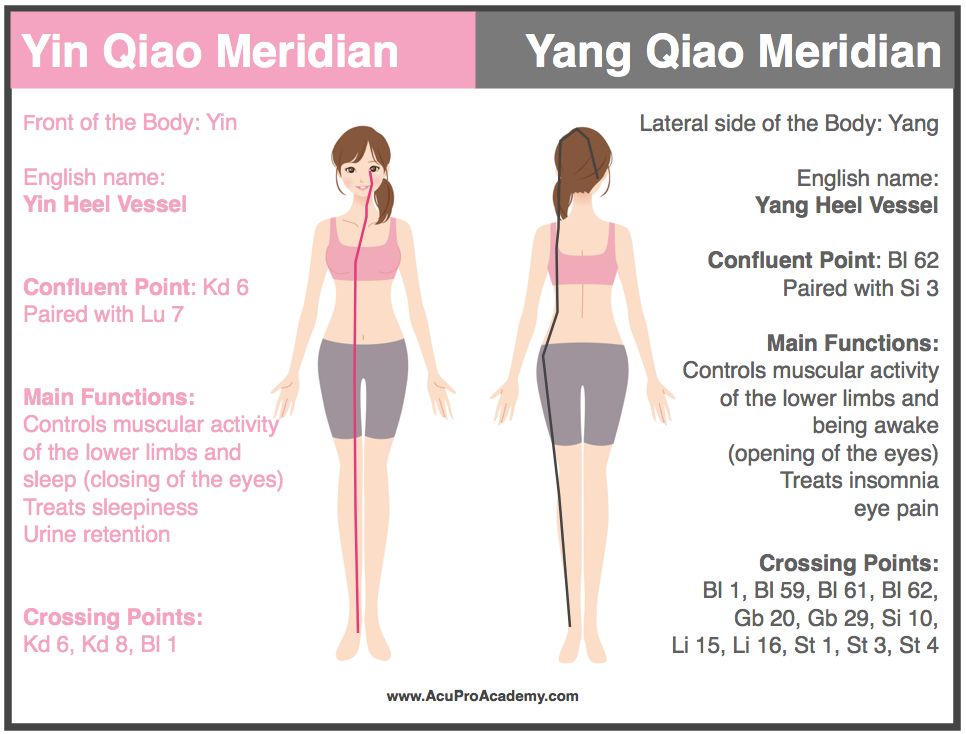
The Qiao vessels enter into the brain through the eyes: the way we “see” influences our stance (posture), but it also influences how life shows up for us. My teacher would always say: “an angry person lives in an angry world.” Others say: we don’t see the world as it is, we see it how we are. To change our perception can often change our experience – of both the world and ourselves.
In general, the organ in charge of promoting “lightness” in the body and mind is the Spleen. It is the source of transformation and transportation in the body. It refines the vital energy and sends it throughout the body, especially to the head and limbs.
When the Spleen fails to properly transform, dampness and phlegm are the result. This can be the cause of many issues from joint and muscle pain to chronic allergies, respiratory and digestive problems, cloudy-foggy head, depression, chronic fatigue and many others.

Beyond the Spleen’s physical ability to transform what is heavy into something light and usable, as in the digestive process, the Spleen also does this for the mind and emotions. It breaks down thoughts and experiences so they can be digested and eliminated. The essence of an experience goes to the “four limbs” and head to empower us. The remainder of the experience (the dregs) go into the Lungs and Large Intestine to be eliminated. Food as well as thought and experience that isn’t properly broken down ends up as damp and phlegm that clogs the energy channels.
Phlegm can go into the channels to cause pain, weakness or even neurological problems (numbness). It can go into the organs to inhibit and weaken their function. Phlegm can also go into the “curious organs”: the brain, genitals, bones (joints), blood vessels to cause various problems.
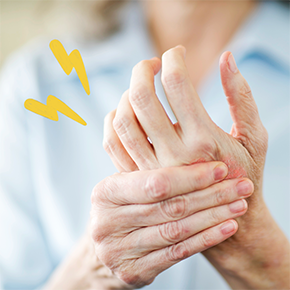
Chinese medicine is very old. It is made up of several “schools of thought,” which contribute knowledge in the form of views of the world. For example, in terms of phlegm each major famous school describes a different origination of phlegm formation. At first this seems confusing, but actually it acknowledges that phlegm can come from any organ, usually due to different circumstances.
There is a phlegm condition called “plum pit qi” or “globus” where the person has the sensation that something is stuck in their throat. Ancient doctors called this a form of “hysteria”: phlegm stagnation due to emotional cause. The most popular herbal formula to treat this condition is the “Pinellia and Magnolia Bark combination: Ban Xia Hou Po Tang.” This formula is composed of a powerful herb for transforming phlegm (Ban Xia), another aromatic herb for moving energy in the chest and abdomen (Hou Po), and another herb that “drains dampness” and strengthens the Spleen (Fu Ling). It is interesting that this formula doesn’t contain any herbs that strongly calm the mind and emotions. Instead it focuses on strengthening the Spleen (mind, digestion) by dealing with the dampness and phlegm blocking it, and also by “aromatically” moving stuck energy. The aromatic effect is that of opening the senses to lightened the feeling of heaviness: to dilate the energy centers of the body. Hou Po is assisted by another aromatic herb (Zi Su Ye), as well as ginger.
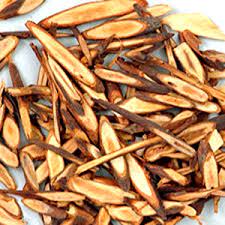
The effect of the “Ban Xia Hou Po Tang” is quite different than the most popular formulas for depression (Xiao Yao San) which focus more on the relationship between the Liver which gets stuck and the Spleen which gets weak and damp. In this case the focus is more on the Lungs, Spleen, Stomach and Large Intestine in terms of using the aromatic quality to dilate the heavy clogged feeling causing the sense of oppression. The aromatics are like incense in a meditation temple: they open the mind, lighten the mood, break through heaviness and excite the senses. The spiciness of the ginger supports the Hou Po (Magnolia Bark) and Zi Su Ye (Perilla Leaf) to aromatically open and dilate.
The most classic formula to treat depression (“Xiao Yao San: the Free and Easy Wander combination”) focuses on moving the energy constraint of the Liver via the herbs Bupleurum (Chai Hu), Peony (Bai Shao) and Mint (Bo He). It also strengthens the Spleen but in a more directly tonifying way via the herb Atractylodes (Bai Zhu). The mint is an aromatic herb, but all others are bitter to move energy in the deeper aspects of the body. Chai Hu and Bo He have the spicy quality to move the constrained energy. And Fu Ling again drains lingering dampness to help strengthen the Spleen. This formula strengthens the mind and moves emotional constraint causing depression.

Another classical disease syndrome discussed in the medical text “Essentials from the Golden Cabinet” is called “Running Piglet Qi.” This condition manifests as panic attacks. The formula “Ben Tun Tang: Running Piglet combination” also focuses on transforming phlegm through the herb Ban Xia. It also strongly tonifies the blood with the herbs Dang Gui, Bai Shao, Chuan Xiong.
The Running Piglet formula utilizes a strategy similar to that of the Xiao Yao San (discussed above), and also that of the very old (root) formula called “Xiao Chai Hu Tang” using the herb Huang Qin to clear damp-heat from the chest and abdomen.
However in the Running Piglet formula Instead of using Chai Hu, the herb Ge Gen is used which has a strong effect on soothing the muscles and releasing anything that has become stuck in this layer of the body. It allows a sense of release and relief of things being held in the muscles, including stress and tension.
A herb that is an interesting addition to this formula is Sang Bai Pi (mulberry bark) which supports the Ban Xia to expel phlegm and helps the Huang Qin to clear heat from the chest.
Looking at a classical herbal formula created for a specific condition like Running Piglet Qi (Panic disorder) illuminates how the ancient doctors viewed the cause and complications of the conditions. Running Piglet Qi is inferred to be a phlegm condition much like Globus. But it also involves blood deficiency and heat in the chest. Whereas Globus is phlegmatic with qi-energy stagnation. Depression as illustrated by “Xiao Yao San” as major constraint of the Liver’s energy (the diaphragm) with deficiency of Spleen energy.
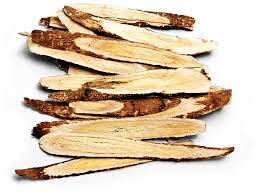
Trauma usually involves treating stasis of blood. There are several formulas created by the military doctor Wang Qing Ren that ultlize the herbs Tao Ren (Peach Kernel) and Hong Hua (Safflower) as chief herbs to move the blood, along with blood nourishing herbs. The focus is on opening the chest and circulating the blood flow to expel the stasis that is keeping the trauma in place.
Blood stasis can cause severe pain as well as a sense of heaviness and even despair. The static blood can cause physical as well as emotional pain, along with self-destructive and addictive behavior. The static blood can also become “hot” causing bleeding disorders as well as mental instability. It can also cause the blood to become toxic. Expelling the static toxic blood, and/or cooling the reckless blood is often the strategy for these types of conditions.

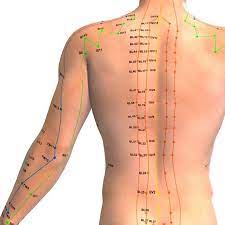
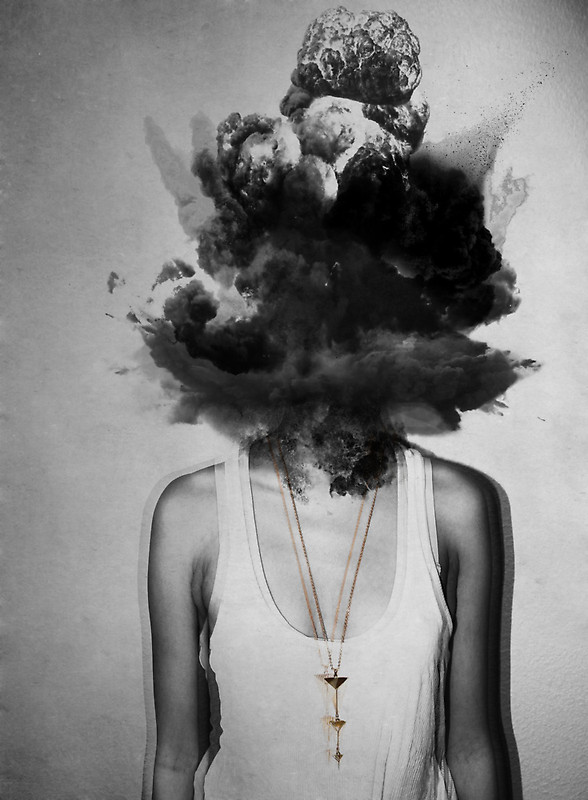

No Comments